Jodhpur Bheru Bagh Parshvanath Temple
As appointed, about 08:30h Saurabh Surana picked us up at the hotel for the planned temple tour. We started with Goliya Mandir Jodhpur, as it was within walking distance from the Surana family’s house. Saurabh Surana kindly accompanied us; his parents had already gone there earlier that morning. When we approached the area, we did not recognize immediately that there was an entrance to a temple, only a front building with a gateway was visible from the street. We wondered if we had found it without Saurabh.

Passage to the courtyard where the temple complex is situated
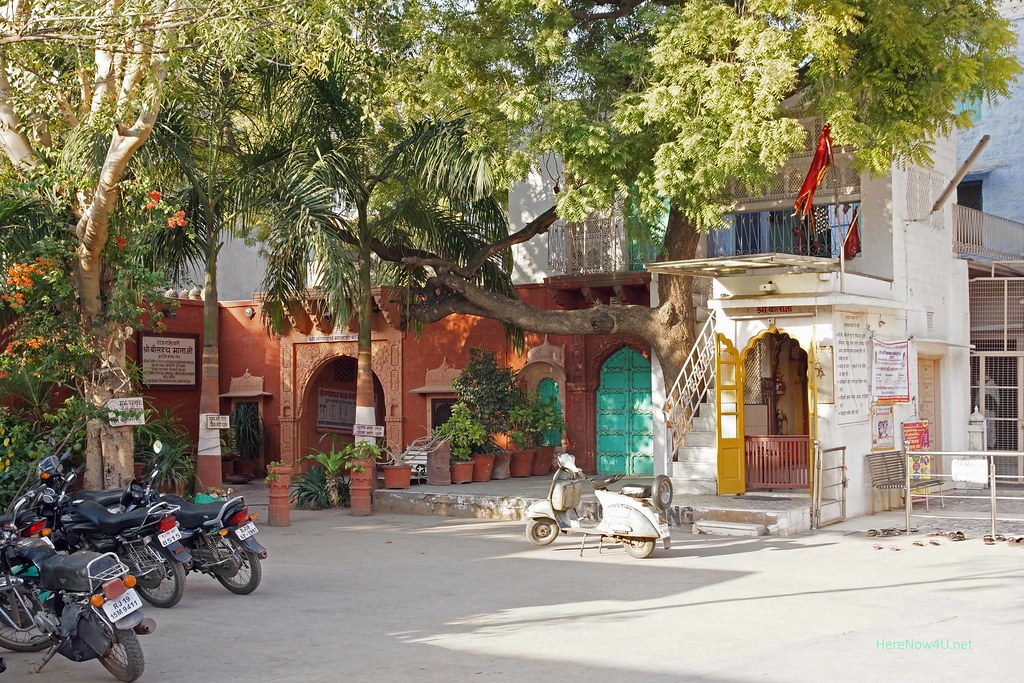
Dharmshala (accommodation) for foreign pilgrims
In a side wing of the temple complex a Dharmshala has been constructed for foreign pilgrims, surrounded by blooming plants and tropical trees. Here also Jains are accommodated who come to Jodhpur for medical treatment or other reasons. The temple complex originates from the first part of the 19th century, when the Marwar king donated a piece of land to a Jain ascetic for this reason. Famous Jain Acharya Vijay Vallabh Suri initiated its restoration and enlargement in the first part of 20th century. For the golden jubilee in 1994 it was renovated again. Not alone for this reason, but also because of its convenient to reach position in the second largest city of Rajasthan, the two-stored temple has become actually a rather frequented centre for pilgrims.
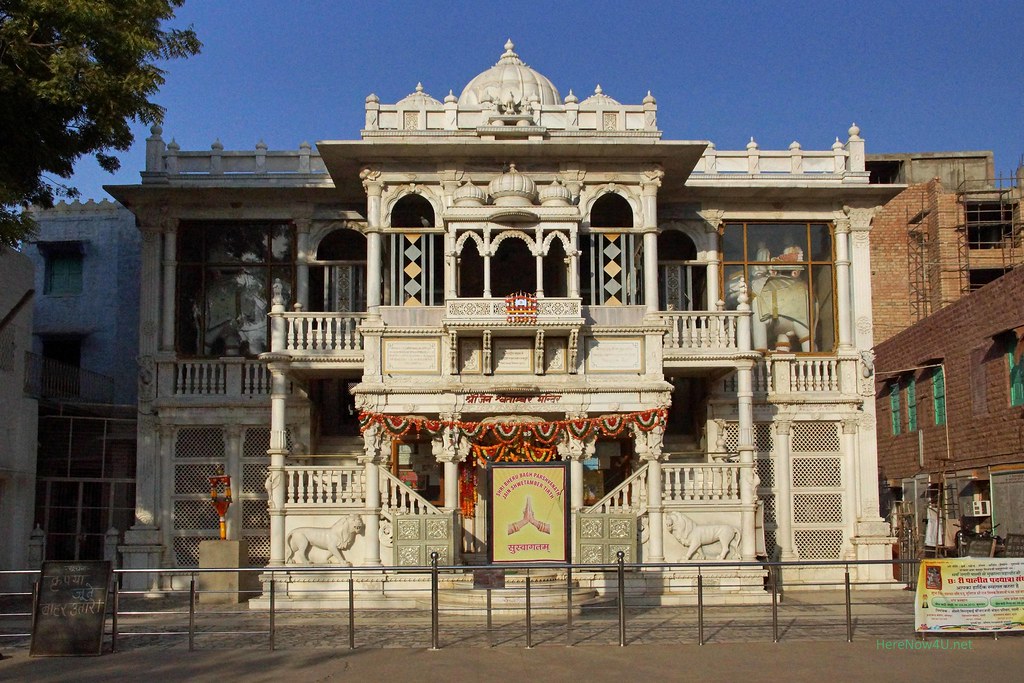
Main entrance of Bheru Bagh Temple

Entry hall
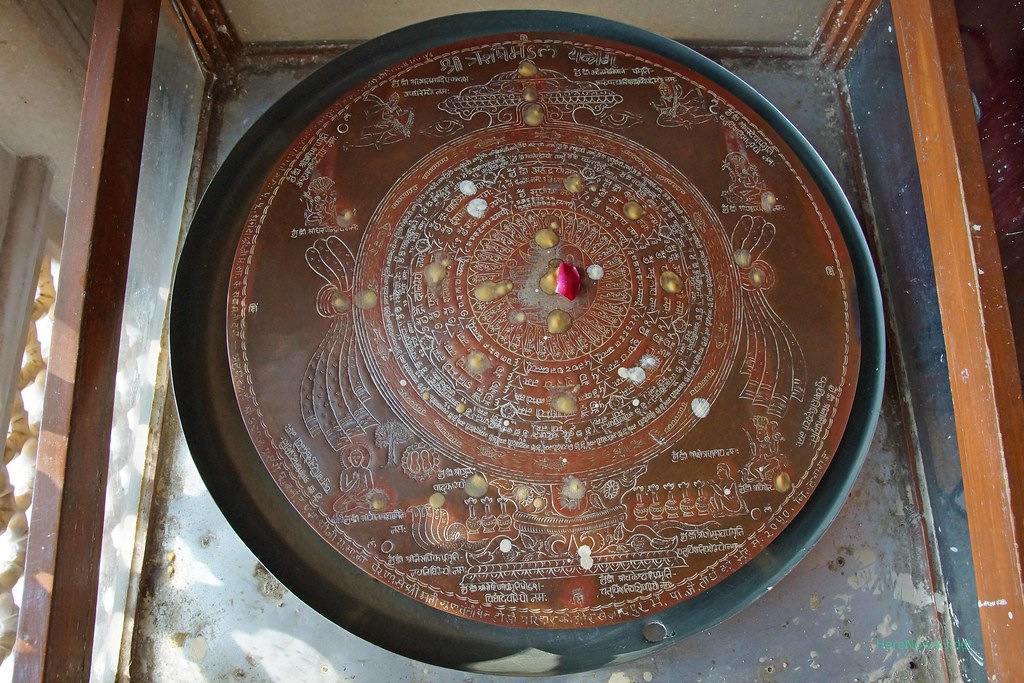
Yantra
(Mantra with mystic illustrations from Jain cosmology) exposed in Bheru Bhag Jain temple
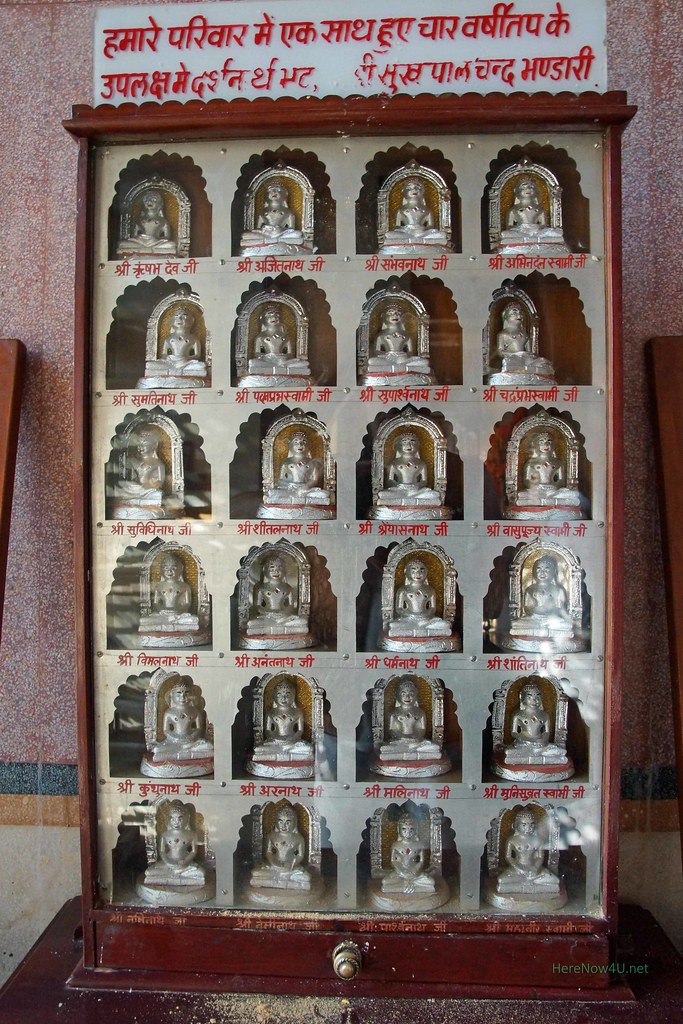
Depicture of all 24 Tirthankaras, as shown quite often in Shvetambara temples
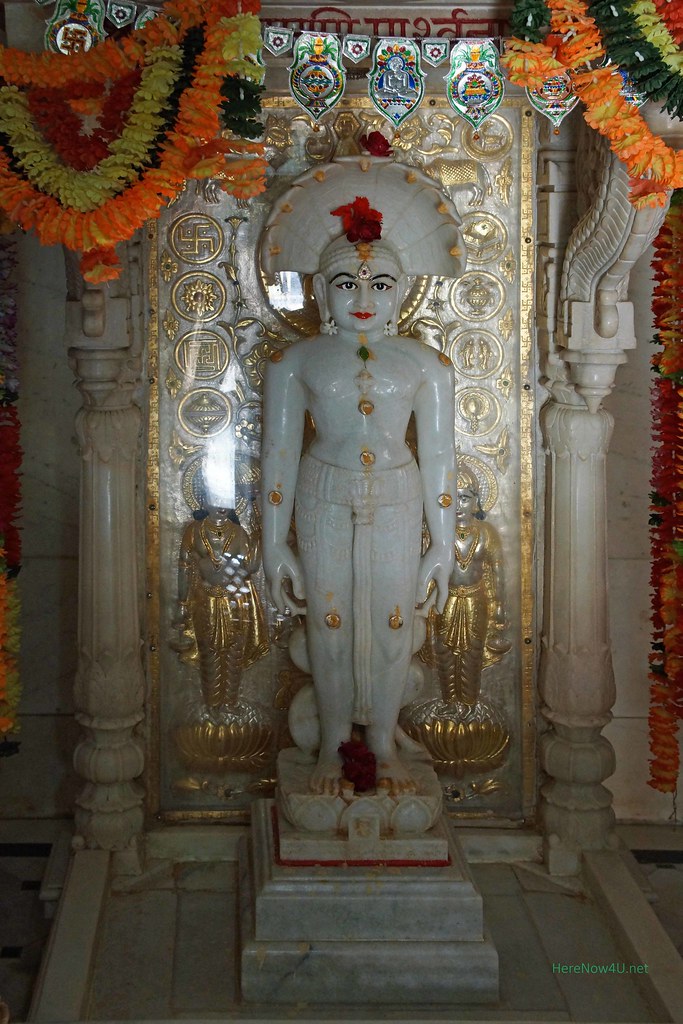
Mulnayak: 23. Tirthankara Parshvanath, standing in Kayotsarga
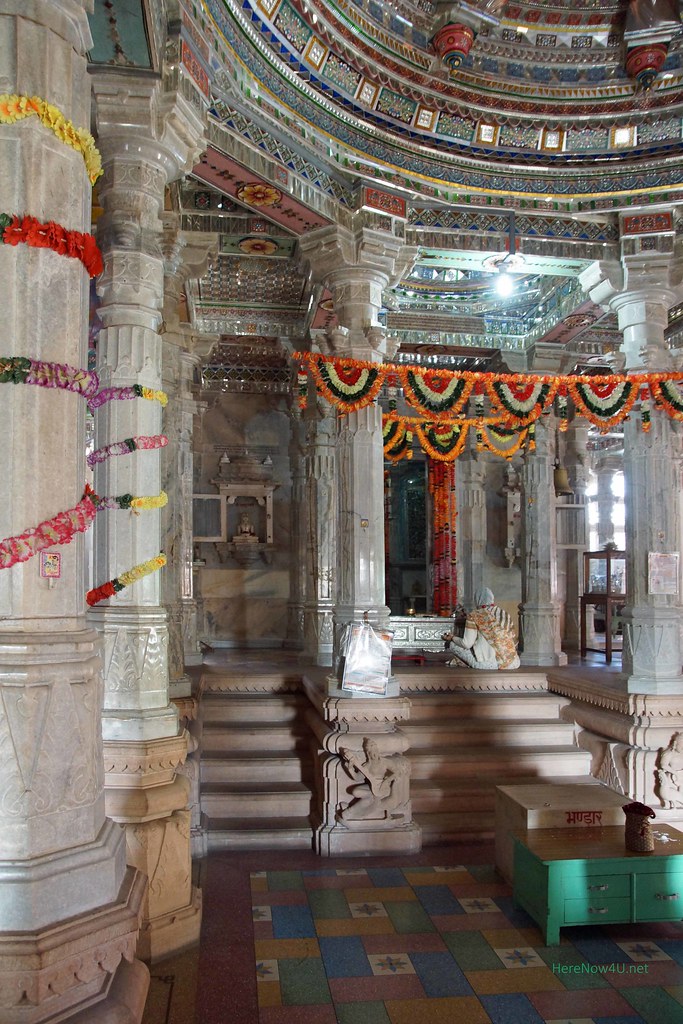
Ceiling decorated with colourful mirrors, scales to Garbhagriha
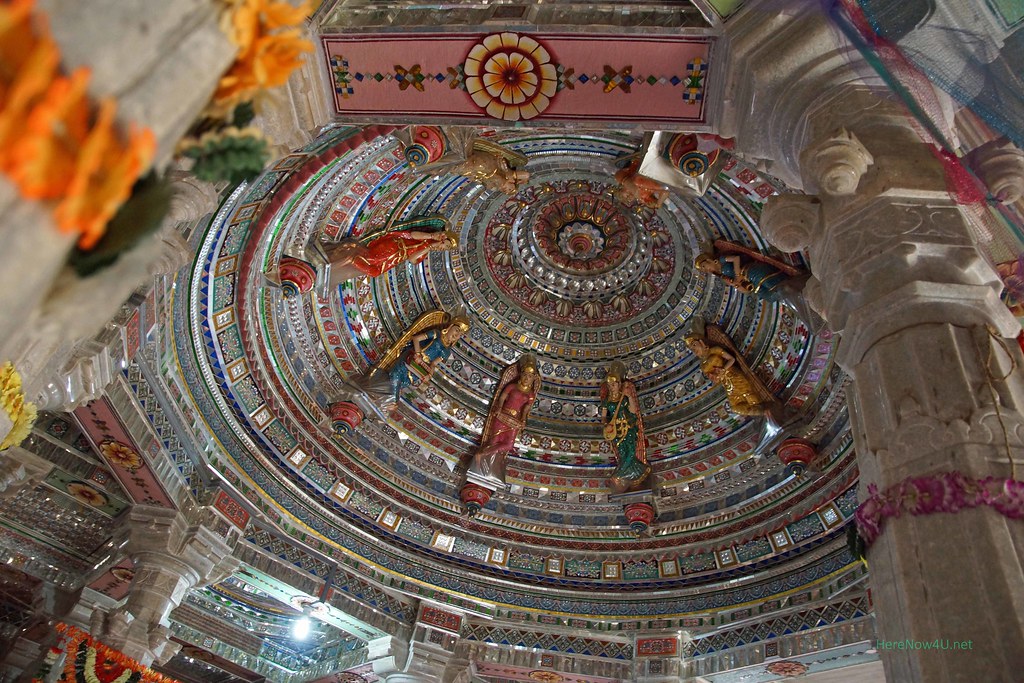
Detailed ceiling view
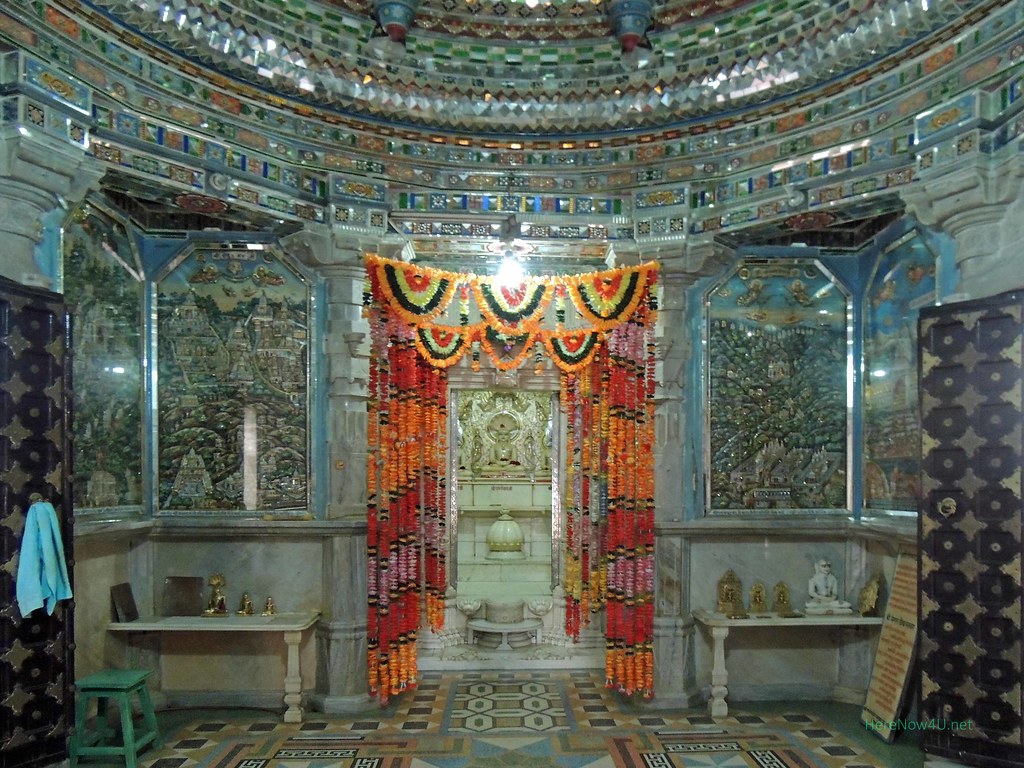
Entrance to Garbhagriha
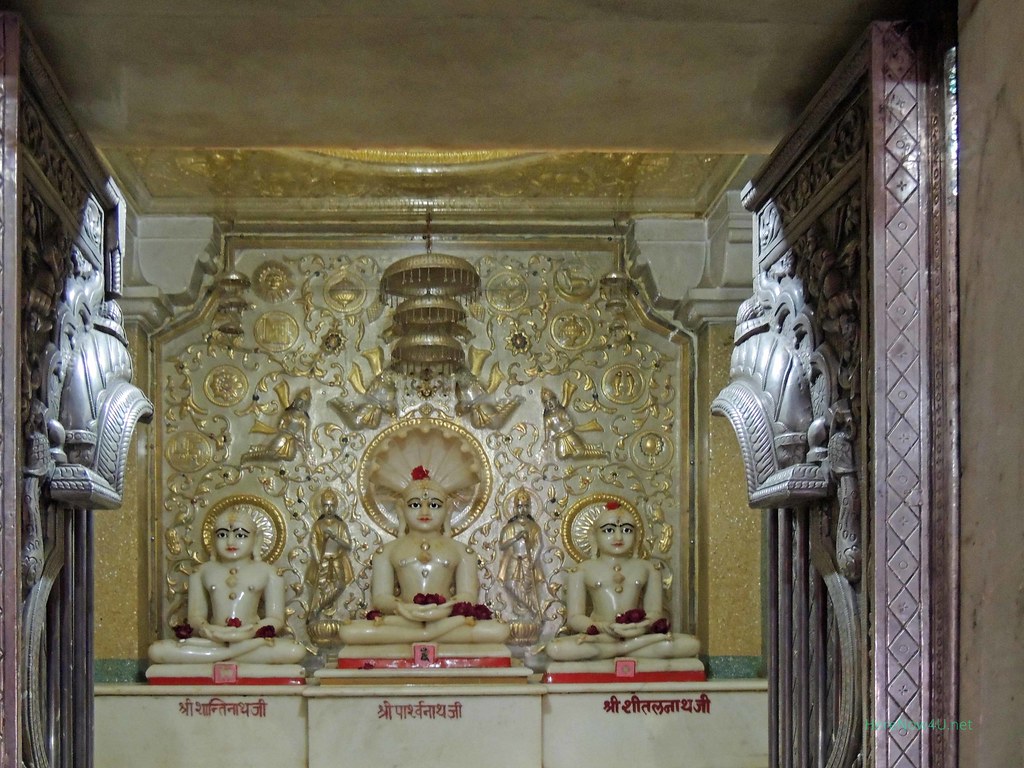
Garbhagriha with Mulnayak 23rd Tirthankara Parshvanatha (m)
After this adequate start we returned to the Surana family’s home, from where we continued our temple tour.
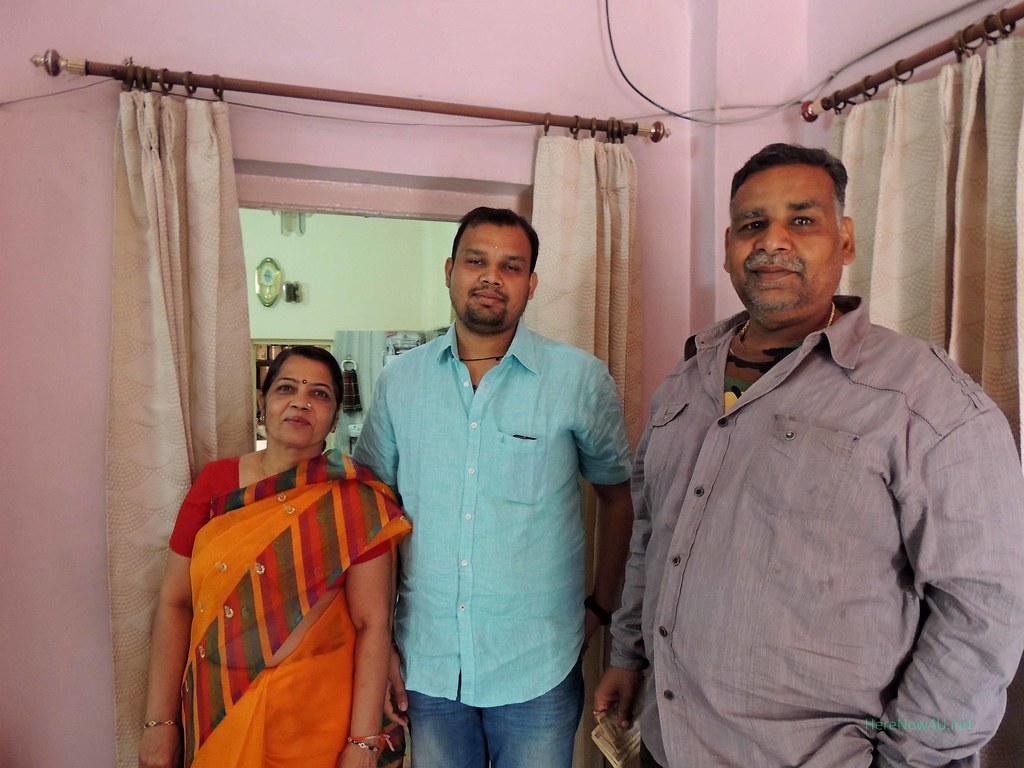
The Surana family
We drove very comfortable in the 7 seats car of the family. Quickly we left the big city behind in northern direction. On the well-developed road getting ahead was very easy. We wondered if this changed sooner or later. After one hour journey we stopped in front of a small Jain temple.
Suswani Bheru Bagh Jain Temple
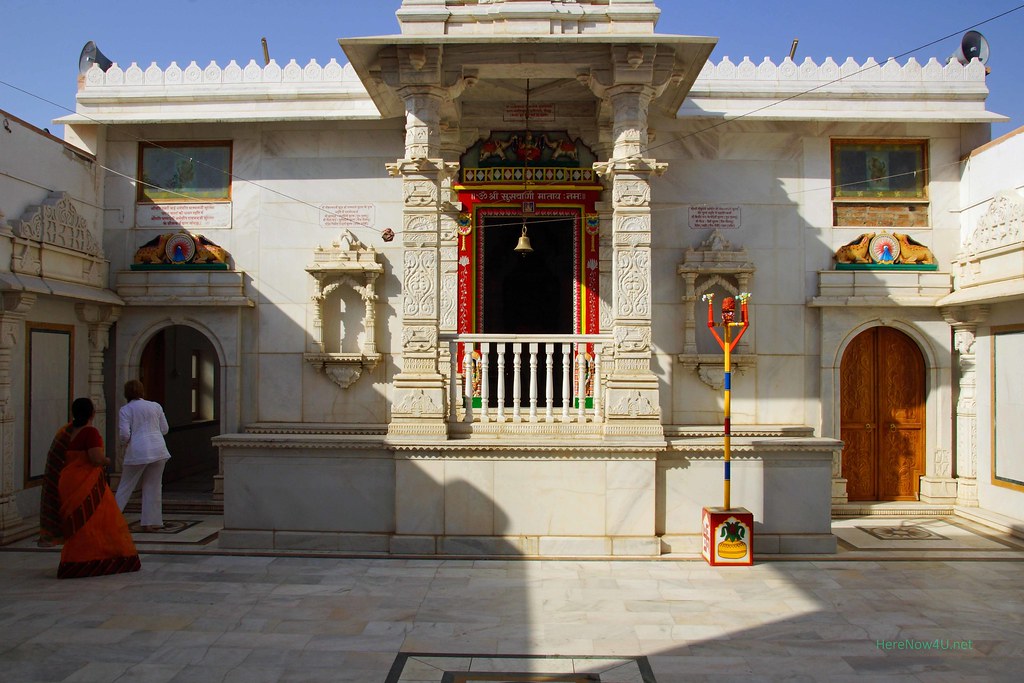
Stopover in Suswani Bheru Bagh Jain Temple, in honour of Kuldevi Suswani Mater, daughter of a Surana and local family deity, situated on the way from Jodhpur to Osian
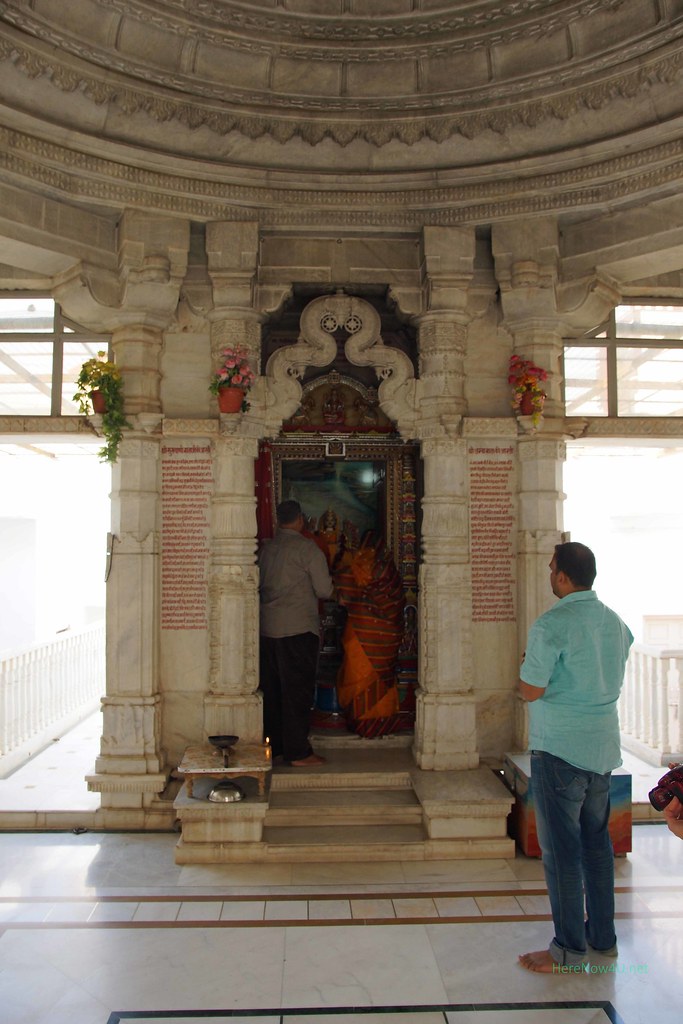
Whenever they pass, the Surana family stops here for devotion
Osian Mahavira Jain Temple
Because of the side trip to the small temple we had to leave the well-developed road. Now we continued on local roads to Osian. They were not so well-developed, which is why my head sometimes came dangerously near to the car’s roof. I was sitting a little bit elevated on the rear-wheels. Osian and Jodhpur are in an approximate distance of 70km, which means that the journey takes nearly 1,5 hours.
Osian once had been a blooming town, in the 8th century anyhow when the local Mahavira Jain Temple was built. At present the temple complex is in the midst of the village Osian. The Oshwal or Oswal Jains are originating from Osian they even are named after the location. Since some centuries Osian is not only a renowned centre for Jain pilgrims, but also for Hindus. The famous Sachiya Mater Hindu Temple was erected between 9th and 10th century. Famous Jain Acharya Ratnaprabha Suri was the son of Rajput king Mahendra Chud and in the 12th century founded Upakesha Gaccha in Osian. He converted many Hindus to Jainism because of the supernatural powers he was said to have command on. They are based on the legend that he had called the animal sacrifices practiced in Hinduism at that time as cruel expression of violence. He succeeded in appealing to the devotees of the Goddess later called Sachiya Mater by him to stop this cruel practice. First the Goddess was put into rage because of the missing animal sacrifices, but Acharya Ratnaprabha Suri succeeded in allay her wrath. Furthermore he convinced her that she being Goddess Sachiya Mater - Real Mother - should no longer accept animal sacrifice as she has to support life in all its facets. She is equally venerated by Hindus and Jains since she is known for showering her blessings to all those who are spreading the message of Ahimsa, non-violence, by living accordingly. Acharya Ratnaprabha Suri further influenced his father to ban animal sacrifice by decree in his domain. Many Hindus converted to Jainism after this according to the telling. Not few Rajput rulers were influenced by the teachings of Mahavira or led a life based on his principles. Some even became his followers.
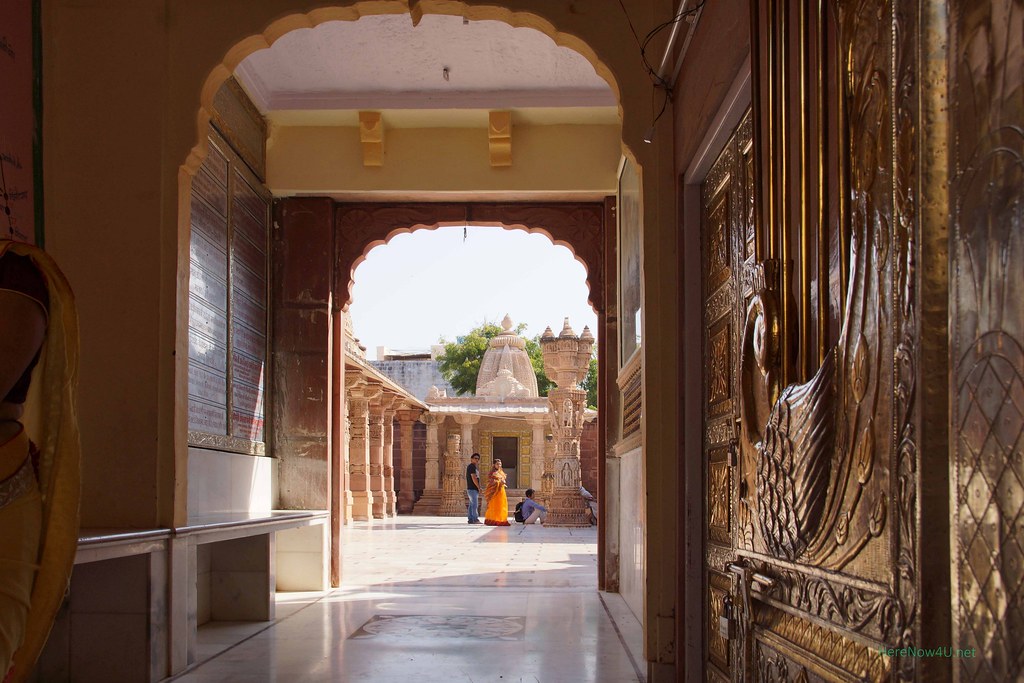
Entry of Jain temple complex

Detailed view on gate
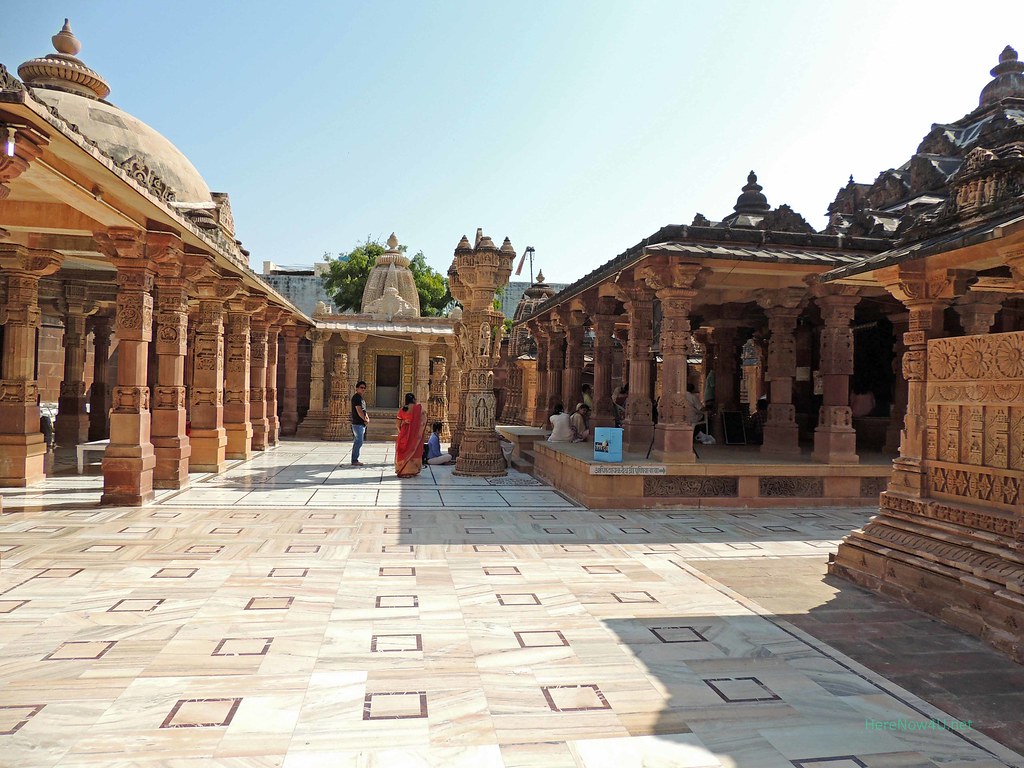
Osian Jain temple complex, to the right Mahavira Temple, to the left arcades with shrines

Columns and ceilings in Osian Jain temple complex

Osian Jain temple complex, l. Mahavira Temple, r. arcades with shrines
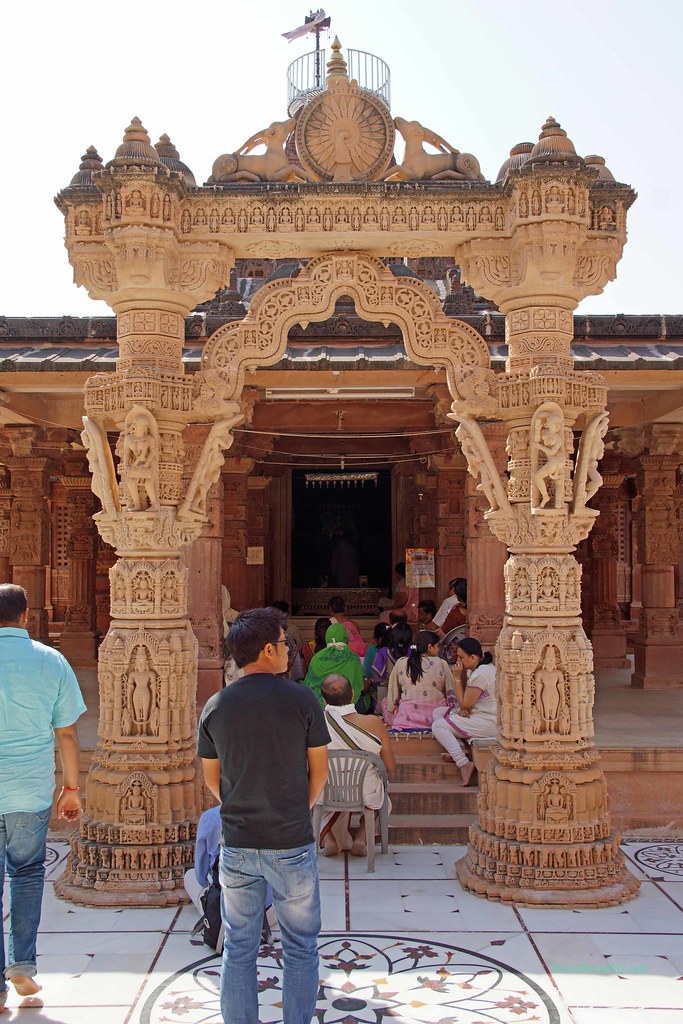
Torana with Dharmachakra in front of Mahavira Temple in Osian
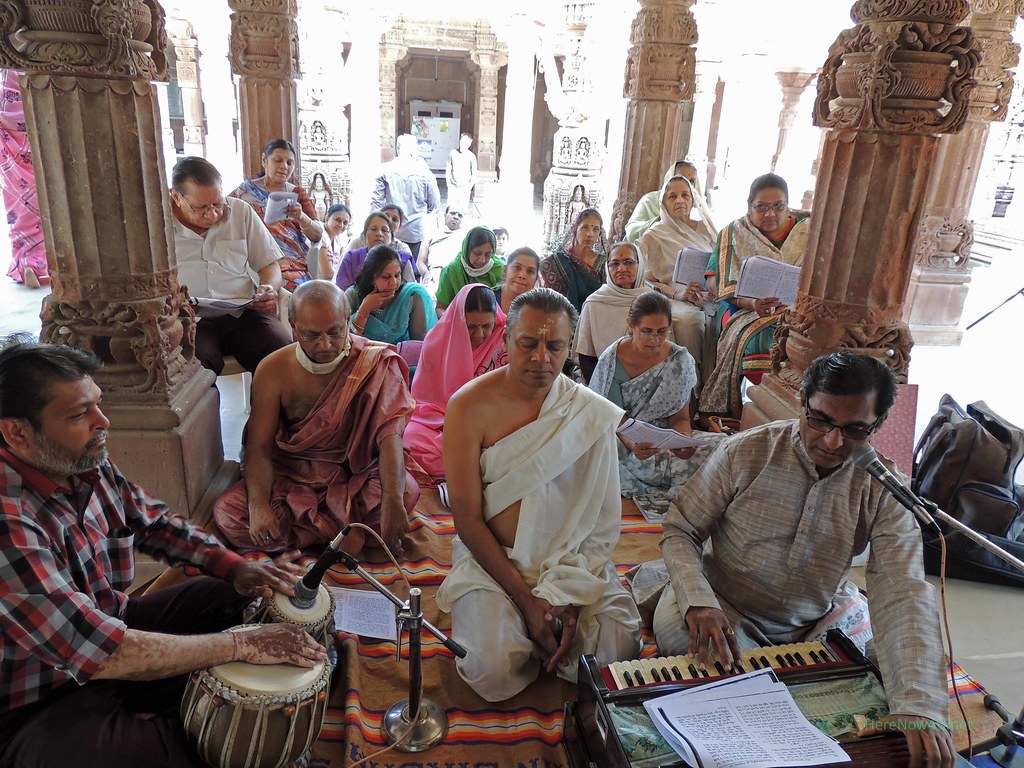
Religious ceremony (Puja) in Mahavira Temple Osian
When we approached Mahavira Temple, we heard beautiful music. There a Puja was being celebrated among a group of 20 people. The Pujari was kneeling between the musicians; he knew all by heart, his eyes were closed. The other participants were reading the papers. Some looked rather interested into the camera.
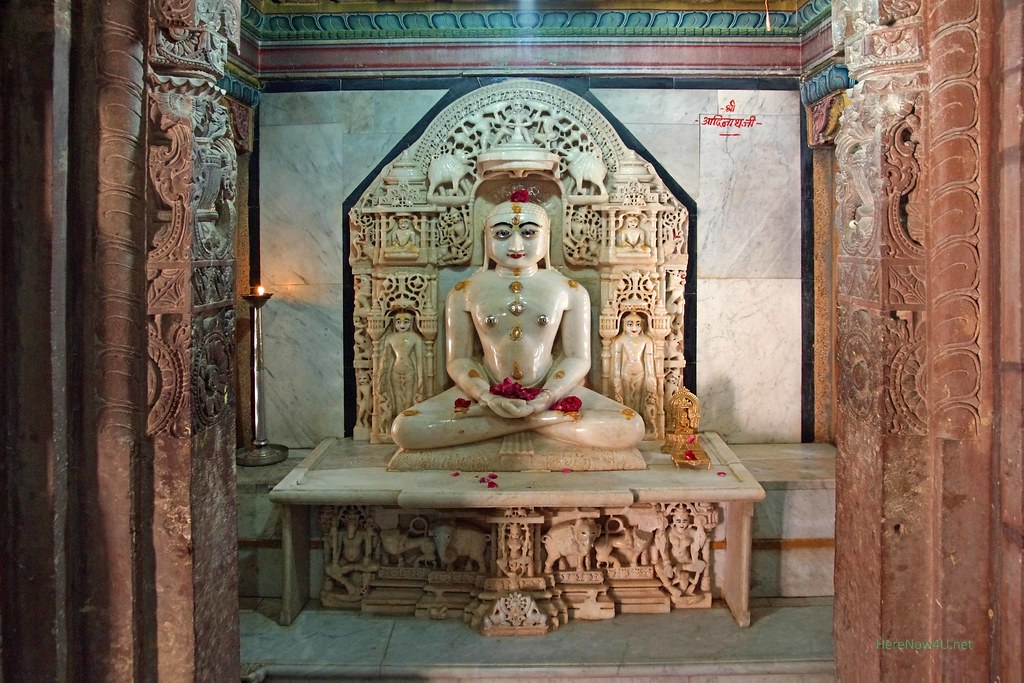
01. Tirthankara Rishabnatha

Mulnayak:
Gold-plated statue of Mahavira in Garbhagriha, flanked by 2 smaller sculptures of Parshvanath made of black marble

Acharya Ratnaprabha Suri
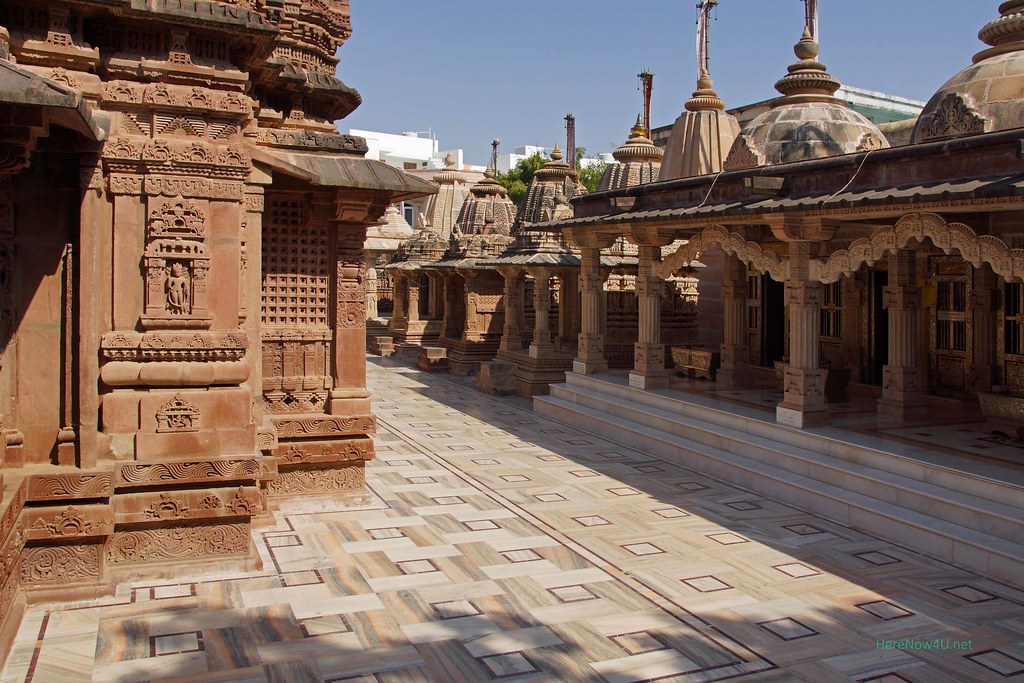
Arcades with Torana
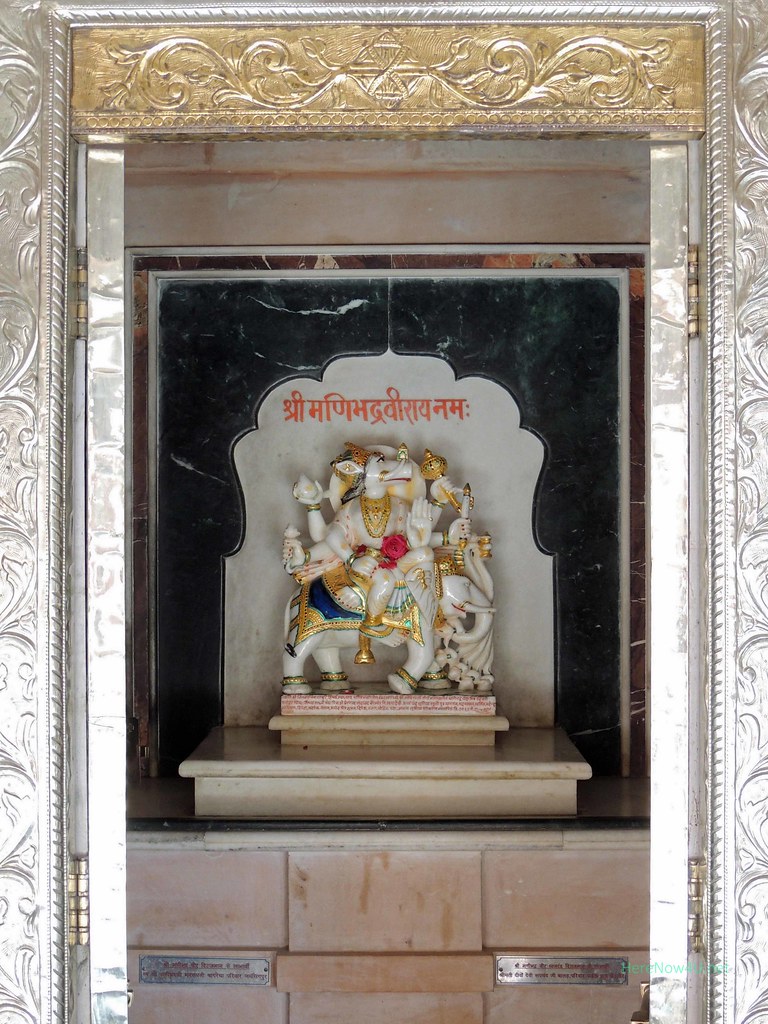
Depiction of Hindu God Vishnu the sustainer, in the Jain temple complex in Osian, with 6 arms and boar head, riding on an elephant, showing the Jain symbol of the open palm
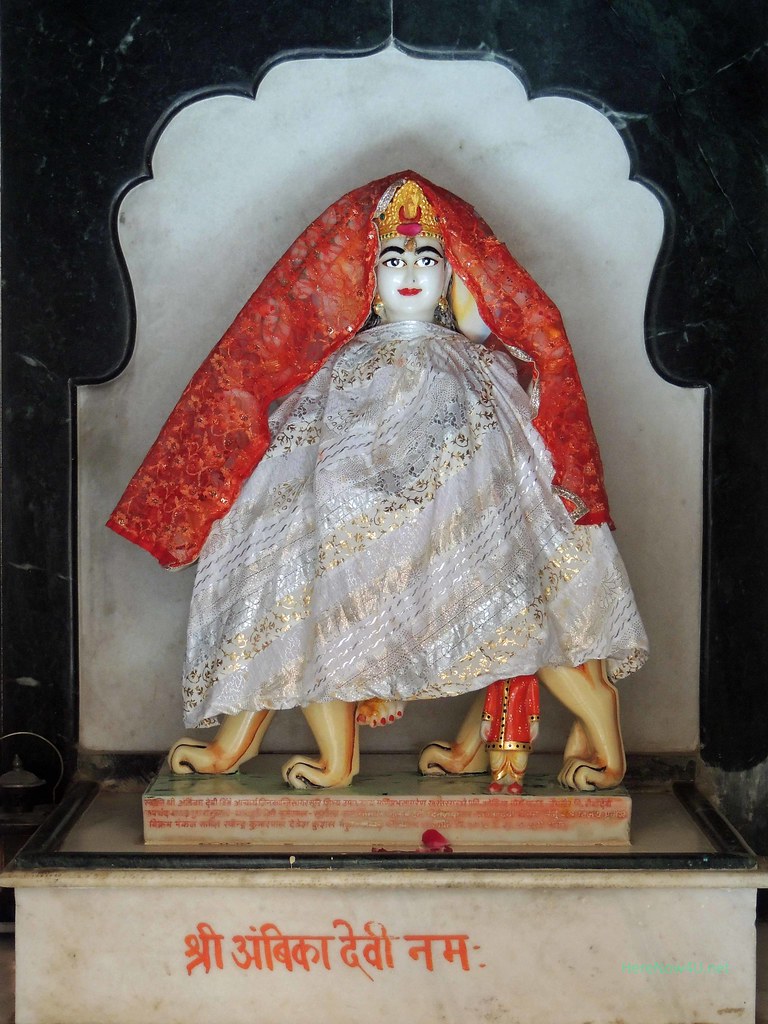
Depiction of Hindu Goddess Durga, hiding with her cloth the lion she is riding on, in the Jain temple complex Osian
The depictions of Hindu Gods in the Jain temple complex Osian does not make wonder here, where Hindus and Jains are rather close to each other through the legend of the Jain monk from noble origin who is said to have converted many Hindus to Jainism. Vishnu being the sustainer of Dharma and the motherly Durga are venerated by many Jains as well. Furthermore Goddess Durga here is a symbol for Real Mother, Sachiya Mater, whose blessings are showered on those turning their back to violence, spreading the message of Ahimsa and living accordingly.
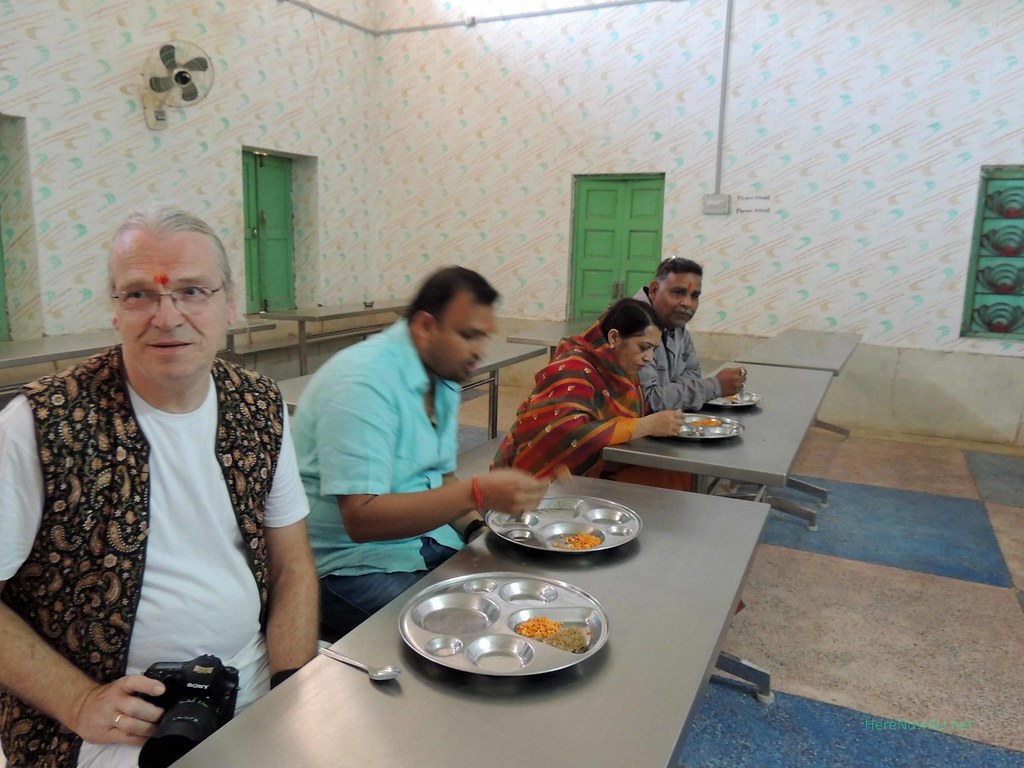
A delicious meal in the Dharmshala of the Jain temple completes the visit

Connecting the pleasant with the useful: Small talk with the spice trader delivering his goods to the Surana family since quite some time.
When we went through the village behind the Jain temple complex the empty stomach gave alarm. Fortunately lunch was ready in the Dharmshala, freshly cooked, very tasty, and available as much as the stomach requested! It is a good tradition in most of the bigger Jain temples to offer an inexpensive, freshly cooked meal to the visitors. Invigorated we continued our tour to the Surana family’s spice trader before heading for next destination.
 Editor Carla Geerdes
Editor Carla Geerdes